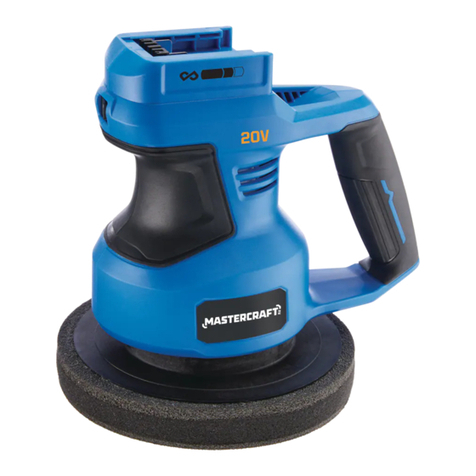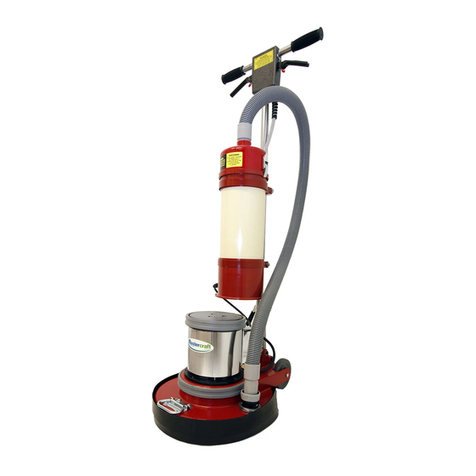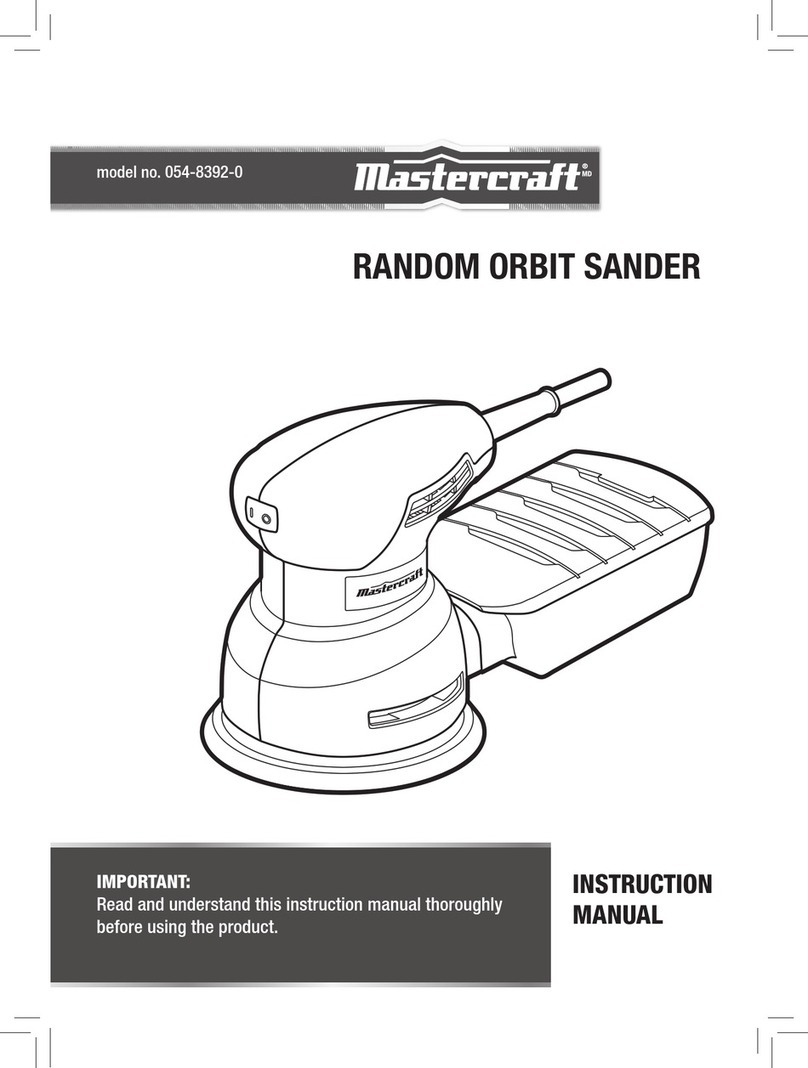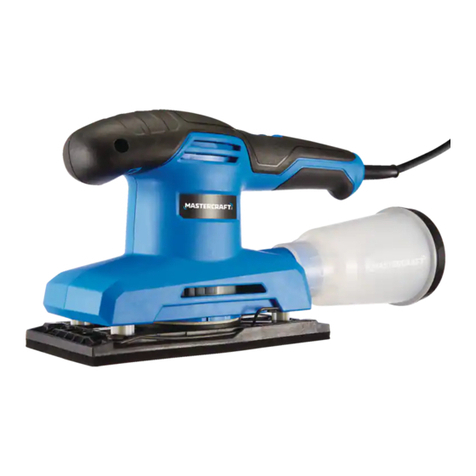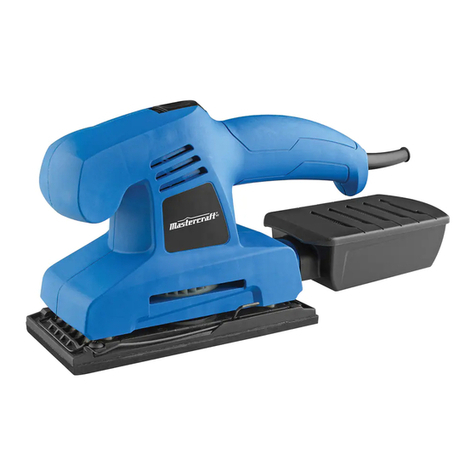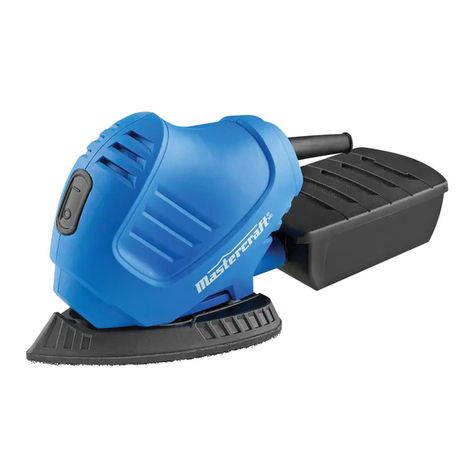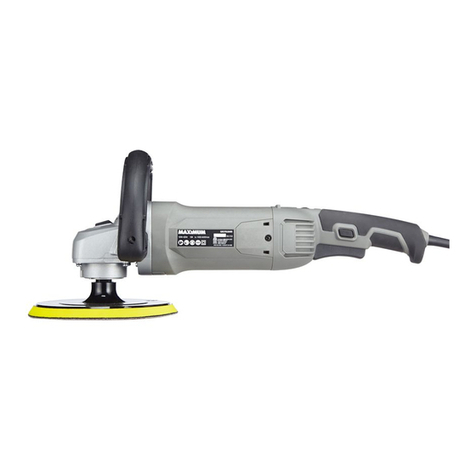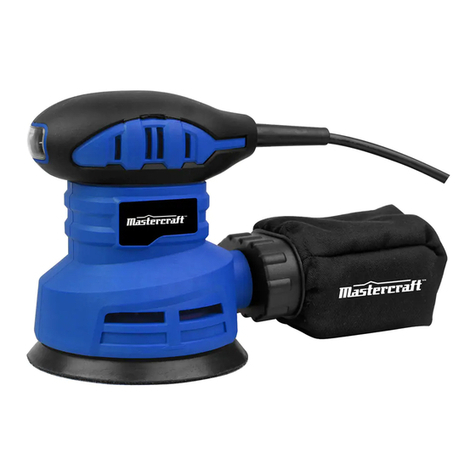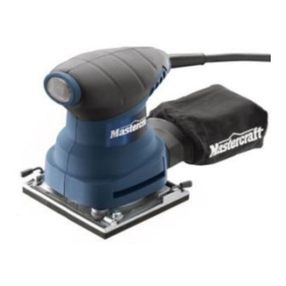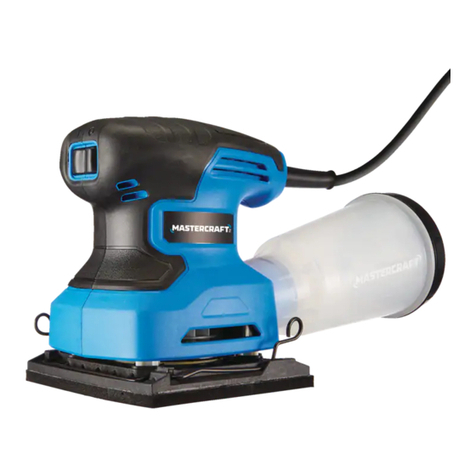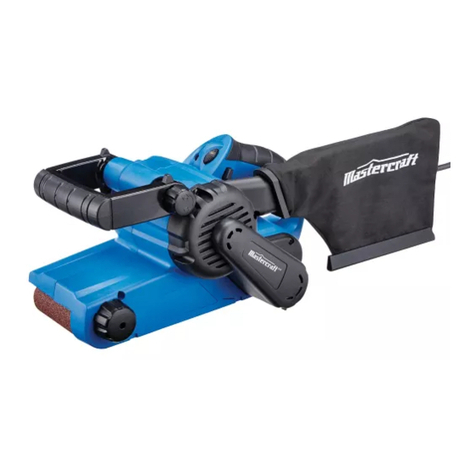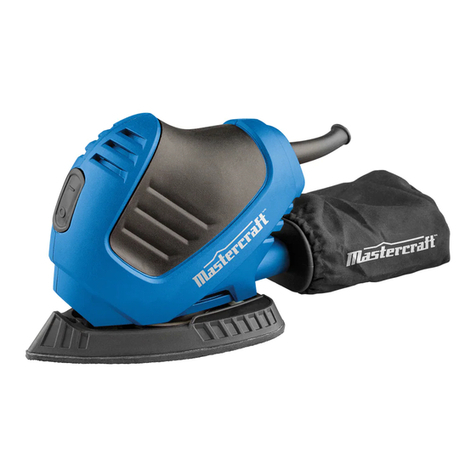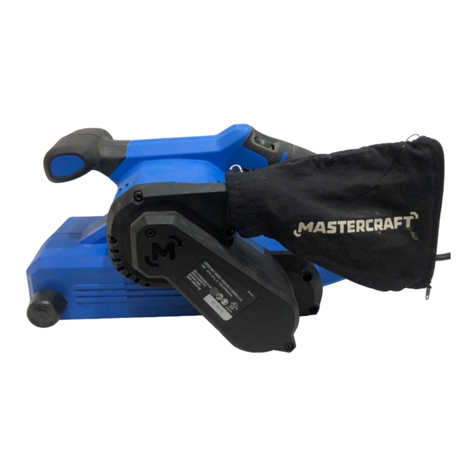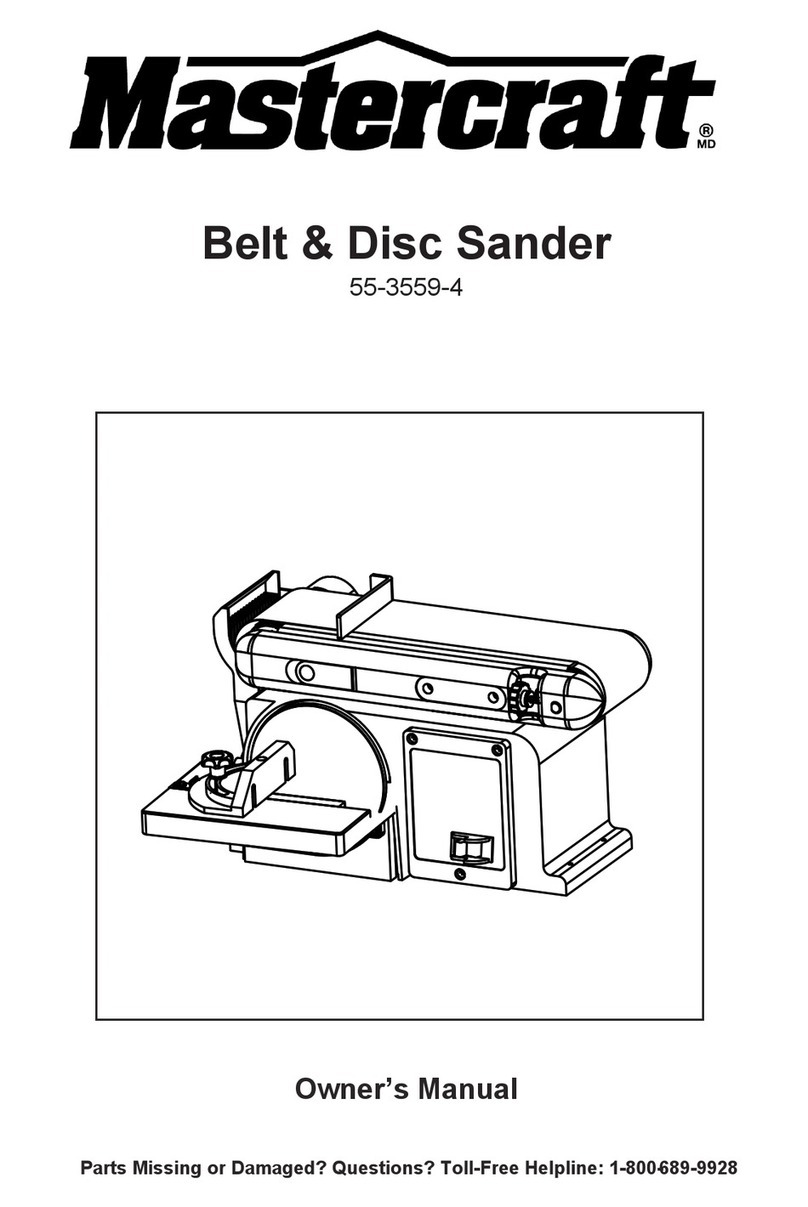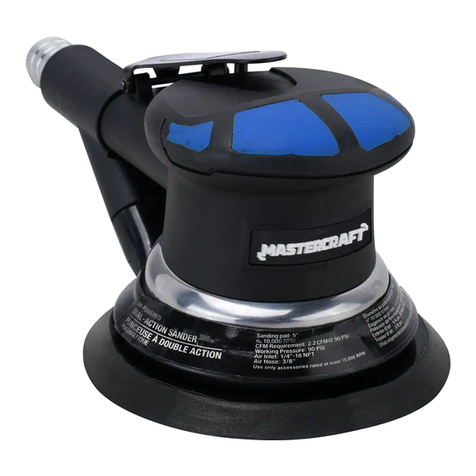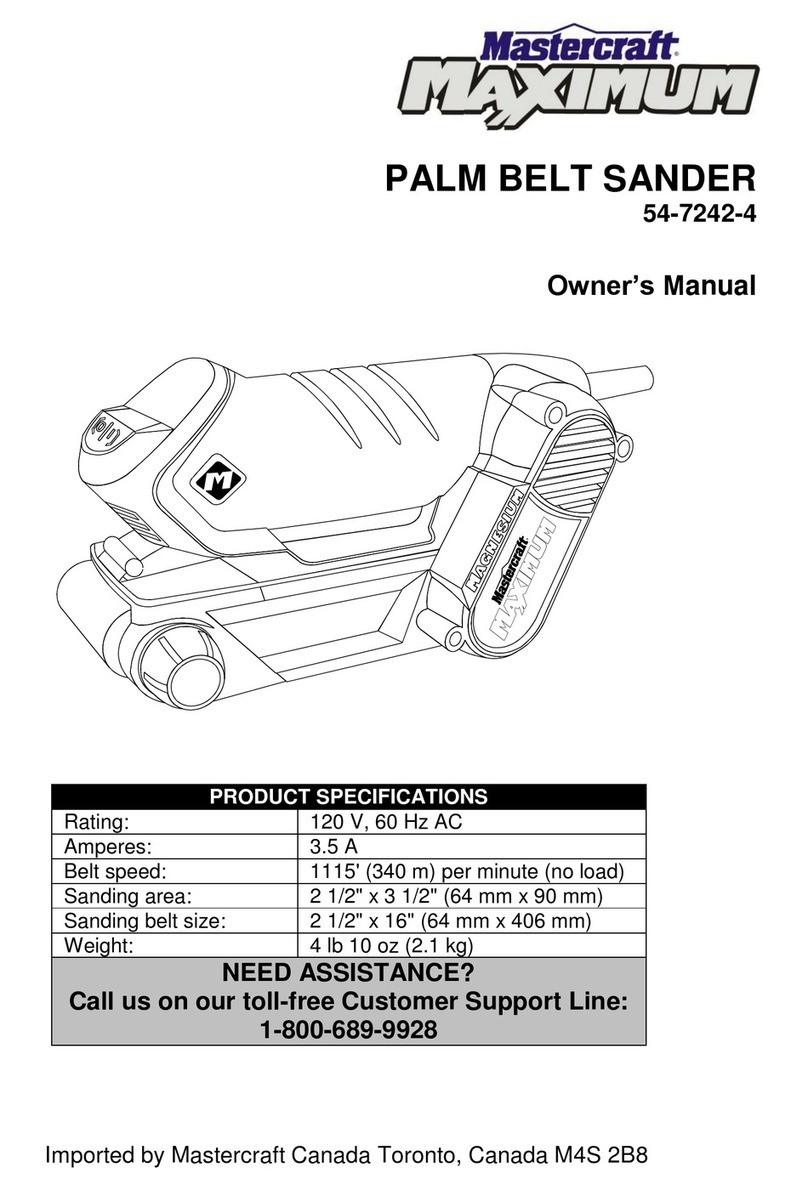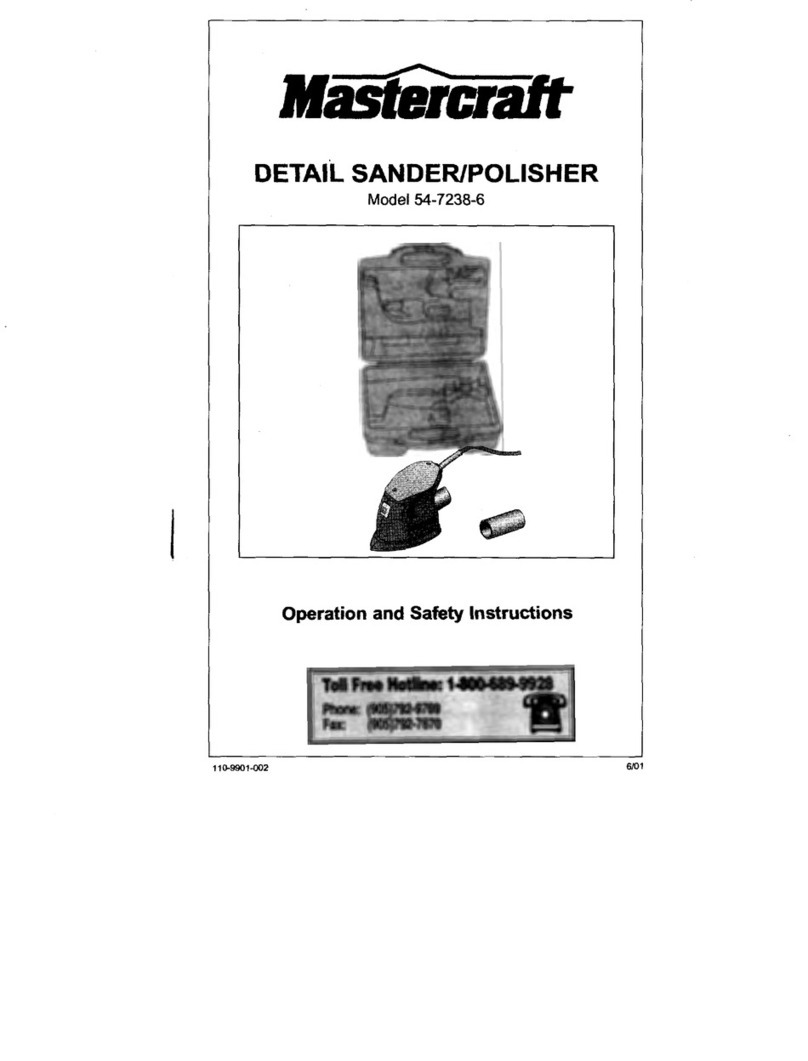
3
Remove adjusting keys or wrenches before turning the tool ON. A wrench or a
key that is left attached to a rotating part of the tool may result in personal injury.
Maintain tool with care. Keep tool clean. Properly maintained tools are less likely
to bind and are easier to control.
Only use recommended accessories. Accessories that may be suitable for one tool,
may be hazardous when used on another tool.
When servicing a tool, use only identical replacement parts. Follow
instructions in the “Maintenance” section of this manual.
Check damaged parts. Before using this tool, check guards and other parts carefully
to determine if they operate properly and perform their intended functions. Check the
alignment of moving parts; check also for binding of moving parts, breakage or
damage of parts, incorrect mounting, and any other conditions that may alter the
operation of the tool.
Any part that is damaged, defective switches included, should be properly repaired or
replaced by a qualified service technician. Do not use the tool if the starter switch is
not functioning properly.
WARNING: The operation of any tool can result in foreign objects being
propelled into your eyes, resulting in severe eye damage. When operating power
tools, always wear safety goggles or safety glasses with side shields and a full face
shield when needed.
WARNING: If any parts are missing, do not operate the tool until the missing
parts have been replaced. Using a damaged or defective tool can result in serious
personal injury.
ELECTRICAL SAFETY
•Double insulated tools are equipped with a polarized
plug (one blade is wider than the other). This plug will fit
in a polarized outlet only one way. If the plug does not
fit in the outlet, reverse the plug. If it still does not fit,
contact a licenced electrician to install a polarized outlet.
Do not alter the plug in any way. Double insulation
eliminates the need for a three wire grounded power cord
and grounded power supply system.
•Avoid contact with grounded surfaces such as pipes,
radiators, ranges and refrigerators. There is an increased
risk of electric shock if your body is grounded.
•Do not expose power tools to rain or wet conditions. A wet power tool will
increase the risk of electric shock.
•Do not abuse the cord. Never use the cord to carry the tool, or to pull the
plug from an outlet. Keep cord away from heat, oil, sharp edges or moving
parts. Replace damaged cords immediately. Damaged cords increase the risk
of electric shock.
•When operating a power tool outside, use an outdoor extension cord
marked “W-A” or “W”. These cords are rated for outdoor use and reduce the
risk of electric shock. Replace damaged cords immediately. Use of damaged
cords can shock, burn or electrocute the operatior of the tool.
